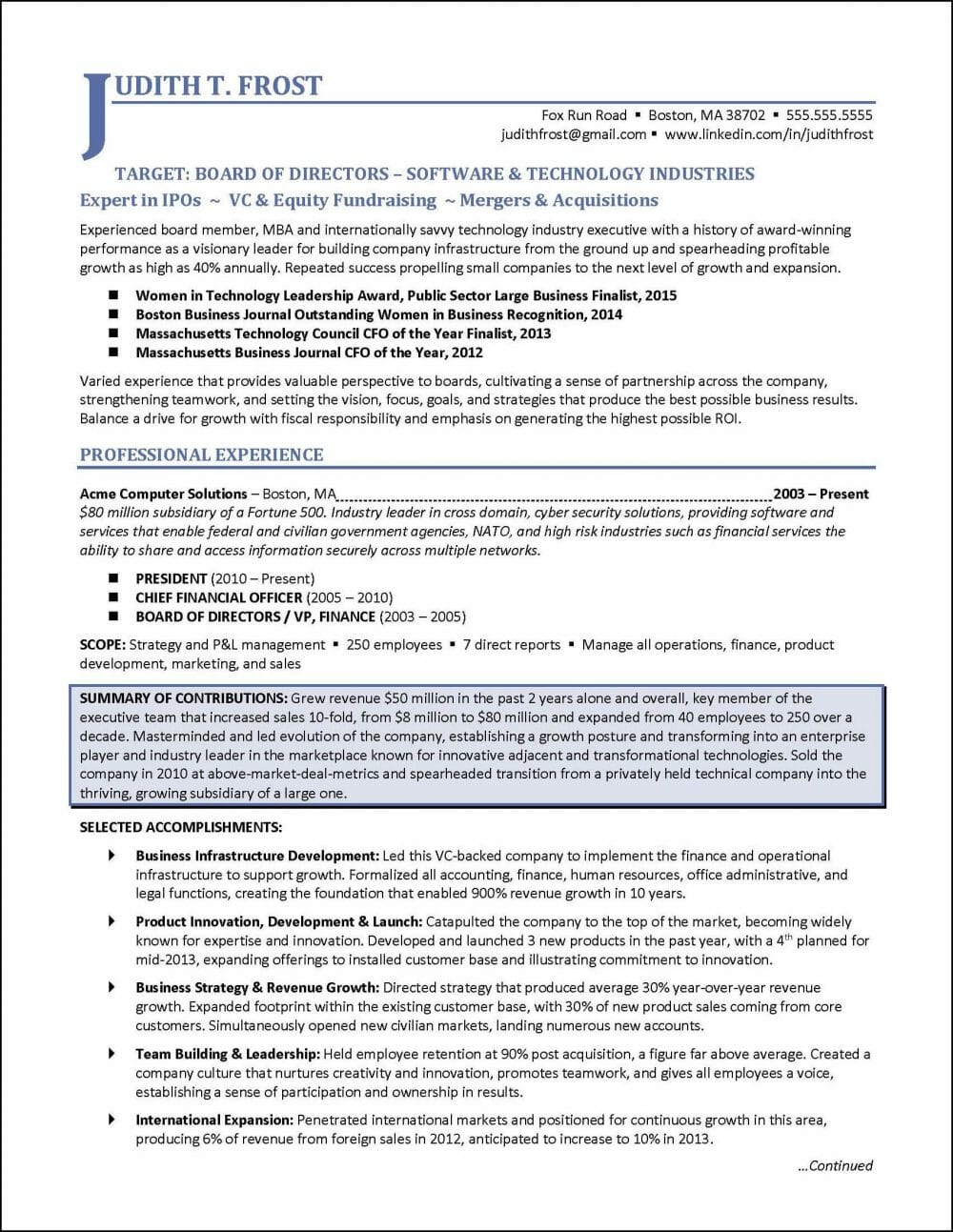Stepping onto a board of directors is a significant career milestone, a testament to years of experience, strategic acumen, and leadership prowess. It’s a role that demands a different kind of professional narrative than your typical executive résumé. You’re no longer just showcasing your operational achievements; you’re demonstrating your capacity for governance, oversight, and strategic guidance at the highest level of an organization. This shift requires a specialized approach to how you present your qualifications and experience.
That’s where a well-crafted board of directors CV becomes indispensable. It’s not just a document; it’s your strategic marketing tool, designed to articulate your unique value proposition to nomination committees and fellow board members. Instead of a generalist approach, it focuses on the specific competencies, industry insights, and board-ready skills that make you an ideal candidate. Understanding the nuances of this document can dramatically increase your chances of securing that coveted board seat.
Crafting Your Narrative: Beyond the Executive Role
When you’re aiming for a board position, your CV needs to tell a very specific story. It’s less about the day-to-day management tasks you’ve excelled at and more about your strategic impact, your governance understanding, and your ability to provide high-level oversight. Boards are looking for individuals who can think critically about long-term strategy, assess risk, ensure compliance, and provide independent judgment. Your CV must reflect this shift in focus, highlighting achievements that demonstrate your capacity for non-executive leadership.
Consider showcasing your experience in navigating complex market challenges, leading significant organizational transformations, or contributing to corporate social responsibility initiatives. Think about instances where you influenced strategic direction, managed stakeholder relationships, or oversaw major projects from a governance perspective. These examples speak volumes about your readiness for a board role, providing insights into your strategic mind rather than just your operational capabilities. The key is to pivot from "what I did" to "how my actions impacted the organization strategically and from a governance viewpoint."
Essential Elements for a Board-Ready CV
A robust board of directors CV template will often include sections that are less common in traditional résumés but are crucial for demonstrating board readiness. These elements provide a comprehensive overview of your governance competencies and strategic value.

- **Board Experience:** List all current and past board directorships, including the type of organization (public, private, non-profit), your role, and the key committees you served on (e.g., Audit, Compensation, Governance, Risk).
- **Governance Education & Training:** Include any certifications, courses, or ongoing professional development specifically related to corporate governance, board effectiveness, or specific industry regulations.
- **Strategic Accomplishments:** Highlight specific instances where your input led to significant strategic shifts, improved financial performance, or enhanced organizational resilience, framed from a governance or oversight perspective.
- **Industry Expertise & Networks:** Detail your deep understanding of specific industries, regulatory environments, or emerging trends, and mention relevant professional affiliations or networks that underscore your influence and access.
Ultimately, your board CV is a strategic document. It’s your opportunity to demonstrate that you possess the gravitas, insight, and independent judgment necessary to contribute meaningfully to a board. Each section should be carefully curated to align with the specific requirements of the board you’re targeting, emphasizing your unique value proposition in governance and strategic leadership.
Practical Tips for Optimizing Your Board CV
Creating a powerful board of directors CV involves more than just listing your past roles; it requires strategic communication and careful presentation. Start with a compelling executive summary or professional profile. This initial section is your elevator pitch to the nominations committee. It should succinctly highlight your most relevant board-level experience, key competencies (e.g., financial literacy, risk management, digital transformation), and the unique value you bring to a board. Make it impactful and tailored to the specific type of board you aspire to join.
When detailing your professional history, focus on impact and outcomes rather than just responsibilities. Quantify your achievements whenever possible. For example, instead of "Managed financial reporting," try "Oversaw financial reporting for a $500M public company, resulting in 100% compliance with SEC regulations and a 15% reduction in audit findings." This data-driven approach provides concrete evidence of your capabilities and the tangible results you’ve delivered, which is highly valued in a board context where strategic outcomes are paramount.
Consider the layout and length of your document. While a traditional CV might be one or two pages, a board CV can often extend to three or even four pages to adequately cover the depth and breadth of your experience, governance roles, and strategic achievements. However, always prioritize conciseness and clarity. Use bullet points effectively to break up text and make information easily digestible. Ensure the design is clean, professional, and easy to read, reflecting the serious and considered nature of a board appointment.
Finally, think about how your CV communicates your leadership style and values. Boards are not just looking for technical skills; they seek individuals who can collaborate, challenge constructively, and contribute to a healthy board culture. While you won’t explicitly state "I am a collaborative leader," your examples of strategic contributions, successful navigation of complex situations, and committee work should subtly underscore these qualities. A well-crafted board CV is an investment in your future, paving the way for impactful leadership at the highest echelons of corporate governance.
